- Home
- Tom Clancy
Locked On Page 7
Locked On Read online
Page 7
Clark and Chavez knew that with one vehicle, there was no way to properly stake out their target location. Instead they decided they would just try to get pictures of whoever came and went, and to that end Chavez had a Canon EOS Mark II camera with a massive 600-millimeter super-telephoto lens that allowed him, with the attached monopod, to get incredibly detailed photographs of anyone who stepped into the lighted doorway at the back of the building in the distance.
Pictures would be helpful, but other than that, there was not much they could realistically accomplish here. A surveillance force of at least four vehicles and eight watchers would be needed to make any sort of respectable effort at covering all the access points of this target location, and a six-vehicle fleet, crewed with two men each, would be the bare-minimum protocol for mobile surveillance in an urban area like Paris when working with a target trained in countersurveillance, as Hosni I Ke, foheb Rokki certainly was.
Chavez and Clark had yet to see Hosni Rokki, but the odds looked good that he was, in fact, here. This was the address Ryan passed on from French internal security, and they had noticed a few young toughs milling around outside the apartment building like a security cordon, perhaps URC men but more likely a local gang hired by the target to act as a trip wire, should any police or other forces come snooping around.
And earlier in the evening, just after dark, Chavez had flipped his hoodie up over his short, dark hair, climbed out of the minivan, and performed a half-hour of foot reconnaissance. He’d made a wide, arcing circle of the apartment building, and strolled through a few parking lots, a playground that looked like it was used these days primarily by glue-sniffers and heroin users, and through the ground level of a four-story parking garage. He then made his way back to the black Ford Galaxy.
Immediately after Chavez climbed in, Clark had asked, “What’s the word?”
“Same three or four guys downstairs at the back of the building. Four guys at the front entrance, too.”
“Anything else?”
“Yep. We aren’t the only ones interested in that apartment.”
“No?”
“Beige Citroën four-door. This side of the road, in the parking lot on the other side of that building there on the left. Male driver. Female passenger. Both black, in their thirties.”
“Surveillance,” Clark said. Chavez wouldn’t have mentioned them if they weren’t.
“Yeah. They were subtle enough, but they have line of sight on Rokki’s place, and we’ve got eyes on the entrance to that parking lot and didn’t see the car arrive, which means they’ve been there since before we got here. So, yeah, they are definitely watchers. Who do you think they are?”
“DCRI would be my first guess. If I’m right about that, then there will be more cars around here; they probably have a surveillance box set up, but I doubt we’re inside it. They are probably closer than we are because they won’t all need to have eyes on the target. They would just tuck into the parking lots and stay in comms with each other. I’m glad the French are watching these guys, but I sure as hell wish they had some stronger measures on their plate. It would be nice for them to pick Rokki up, give him a shake, and see what falls out.”
“Keep dreaming, John. Not the French. The CIA used to do a little of that, before Kealty put the kibosh on offending terrorists.”
“Heads up, Ding,” John said suddenly. A pair of young toughs walked by on the left from behind. Both men slowed and looked into the van. John and Ding were somewhat concealed behind the heavy tint, but they were by no means invisible. Clark stared back at the two young African immigrants for a long moment.
Then the men walked on.
Clark’s steely-eyed gaze had won the encounter, but they were prepared if they had to actually talk to the locals. The two American spies never worked any operation without a plausible cover for action, a reason to be in a location other than the actual motive. Both men had worked under so many covers over the years, oftentimes preparing themselves on the fly, that they possessed the abilities of well-trained actors.
The cover for this op, should they be pulled out of the vehicle by police or internal security or even a well-armed neighborhood drug gang, was clever in both its simplicity and plausibility. Clark and Chavez were, if anyone demanded to know, American private investigators watching the flat of a woman who cleaned the home of a wealthy American living in the Latin Quarter. According to their story, their employer suspected the cleaning lady of stealing his valuables and then fencing them from her flat.
It would bear short-term scrutiny only, but nine times out of ten, that was enough.
One by one, the lights turned off on the fourth floor of the ramshackle building two hundred yards up the street. Clark looked through his binoculars through the rain.
“It’s ten-thirty. Is it bedtime?” Clark asked Chavez.
“Maybe so.”
Moments later, a Renault van passed Clark and Chavez’s position; it slowed at the target building and then pulled to the front door and stopped.
“Maybe not,” said Chavez now, and he readied his camera on the monopod, focused it on the area of light near the back door.
A minute later, a man exited the lobby of the building, walked directly to the light on the wall by the door, and unscrewed the bare bulb. The entire scene went dark.
“Son of a bitch,” muttered Chavez.
Clark kept his eyes on his thermal binoculars, and they picked up the white-hot silhouette of the man who’d unscrewed the lightbulb as he walked down to the street and shook the hand of the driver of the Renault. He then spoke into a mobile phone, and soon four more ethereal silhouettes appeared from the back door of the dark building.
Chavez had given up on his camera for now, and instead he held a thermal monocular up to his eye. He saw the ghostly white figures exiting the building, and could tell they were four men, and he could see they pulled rolling bags and carried briefcases.
“Can you ID Rokki?” Chavez asked.
“Not positively through these thermal optics,” said Clark. What he could discern, although just barely, was that the four men with the luggage all wore suits and ties.
The driver of the van and the man who’d unscrewed the lightbulb helped the four travelers get their bags into the back of the vehicle. The interior light came on as they opened the tailgate. It wasn’t enough light for long-range camera work, but the two Americans were able to get a better look at the men and their luggage.
“Is that Louis Vuitton?” Chavez asked, his eyes peering through his camera’s high-powered lens.
“I wouldn’t know,” admitted Clark.
“Patsy made me look at handbags for two hours in London once. I’m pretty sure that’s the same design. Even Louis Vuitton handbags can run over a grand; can’t imagine how much those big rolling suitcases go for.”
The four men climbed efficiently into the van. They moved like a team as they found their seats and shut the door, extinguishing the lights.
“The tallest guy looks like he could be Hosni Rokki, but I can’t be certain,” Clark said.
“Whoever they are, they look like they’re heading back to Charles de Gaulle.”
“Maybe,” said Clark. “But it seems odd Hosni would fly into town just to meet up with three guys, then fly right back out. I think something else is going on.”
Chavez said, “This time of night there is no way we can tail them without being compromised. If these jokers are any good, they are going to spot us. It’s a shame we don’t have any more vehicles to split up the coverage.”
Clark looked ahead to the entrance of the parking lot where Chavez had noticed the surveillance team during his recon. “Maybe we do. If the French have a fixed surveillance operation around the target, then I’m willing to bet they have a mobile surveillance operation ready to go. Maybe we can just piggyback on them.”
“What do you mean?”
“I’m thinking we can stay back, away from the target, and do our best to pick out t
he vehicles following him. If we can manage to stay behind the DCRI backing car, we can follow the target without being spotted.”
“So we tail the tail.”
“Right. You up for it?”
Ding Chavez just nodded. “Sounds like fun.”
The Renault van with the driver and the four men in suits turned around in the street and began heading back in Chavez and Clark’s direction. The Americans sat patiently as the vehicle passed. They did not start their vehicle; instead they just packed up their gear and waited for the van to turn left some seventy-five yards behind them.
Both men knew what to expect next.
“Here we go,” said Chavez calmly. “Let’s see who’s working the night shift at DCRI.”
For a moment all was still on the dark street, until one by one the headlights of three vehicles lit up the night. An ancient four-door Toyota in the parking lot of the building ahead and to the right of Clark and Chavez’s position, a black Subaru station wagon facing their position but on the other side of the street and a good hundred yards past Rokki’s abandoned flat, and a white Citroën mini-truck that faced the apartment forty yards past Clark and Chavez. One after the next, all three vehicles pulled out into the street and turned down three different roads, all toward the south.
Seconds after this, the beige Citroën with the black couple pulled into view, made a left and then a right, and headed off in the direction of all the other cars.
When it was dark and quiet again, Clark still did not start the Ford; he drummed his fingers on the steering wheel for a moment.
Ding was confused by this at first, but then it dawned on him. “That looked pretty bush league for French intelligence. They wouldn’t have all left together like that unless they were trying to draw out countersurveillance. There’s one more out here somewhere.”
“Yep,” said Clark. “There is a trigger vehicle. Somebody who has eyes on this street right now.” He paused. “Where would you be, Ding?”
“Easy. I like that parking garage that I walked through. If I could get in and out without too much fuss, I’d plant my trigger car on the second level so I could see the street and Rokki’s building.”
Just then, some thirty seconds after the last surveillance vehicle disappeared from the dark road, headlights lit up the second level of the parking garage, right where Ding and John were looking. It was a four-door sedan; neither of the Americans could see more than the hood and windshield and the glowing lights as the car backed up, turned around, and then headed down the ramp to the exit that led out to the boulevard.
John Clark started his engine and then pulled out into the street.
“Good call,” Chavez said.
“Even a blind squirrel finds a nut from time to time.”
“Roger that.”
9
They caught up to the beige Citroën and stayed several car lengths behind it after determining it to be the backing car, the vehicle trailing behind the lead of the mobile surveillance unit. The Citroën would be in radio contact with the rest of the detail, and all the follow vehicles would move in and out of formation to change out the command vehicle, the name given to the vehicle directly tailing the target. Other cars and trucks would be racing ahead on side streets so they could naturally fill in the slots of the running box surveillance.
As they drove, the two Americans kept their eyes peeled, just in case there were more units in the French security detail around or behind them that they didn’t ID at the target location.
For several blocks they suspected a brown bread truck was involved in the tail. It wove through traffic and seemed to mirror the movements of the beige Citroën, but John and Ding ultimately ruled it out when it pulled up to a large commercial bakery and parked in a loading bay.
They also had their eyes on a black Suzuki motorcycle, driven by a man in a black leather outfit and black helmet. Bikes were great for surveillance work on congested streets, and although there were other motorcycles on the road, they’d first noticed this Suzuki a few minutes after leaving the target location. They couldn’t be sure, but both men decided they’d keep track of the black bike.
After no more than five minutes on the road, Chavez and Clark had their answer to the question of whether or not the target was headed to Charles de Gaulle Airport when the chase car continued on south past the Autoroute du Nord.
“CDG is the other way,” said Clark. “We’re heading into town.”
“You’re doing pretty good for a blind squirrel.”
Clark nodded, then noticed the Citroën sedan pulling ahead. “Looks like the backing car is rotating up.”
Seconds later the white mini-truck appeared ahead of them from a side street. It was now the backing vehicle of the mobile fleet, so Clark and Chavez followed it.
The black Suzuki did not move around in the surveillance formation, it just stayed a bit ahead of John and Ding as it headed into Paris. This ruled it out as part of the DCRI unit.
A steady rain began to fall as the procession reached Paris proper, passing into the Eighteenth Arrondissement. They turned to the east once, then took another turn that led them due south. Clark flipped the Ford Galaxy’s windshield wipers to their highest setting so he and Chavez could get the clearest look through the rainy night at the taillights of the car ahead. Within minutes the mini-truck increased its speed and disappeared into the night, but not before a black Honda four-door pulled out of the parking lot of a fast-food restaurant and headed in the same direction as Clark and Chavez.
“Must be the car from the parking garage,” Chavez said.
Clark nodded appreciatively. “This detail is damn good. If we didn’t know they were here, we’d never spot them.”
“Yeah, but it’s going to tighten up for them, and for us, as we get deeper into the city. Wish we had a clue where Rokki was heading.”
Just then, as if on cue, the Honda four-door slowed behind a Mercedes that pulled out of a private garage below a luxury apartment building. John was in the left lane, and it was clear ahead of him except for the black Suzuki, so he calmly switched lanes to put himself a few cars directly behind the Honda, so he wouldn’t have to pass him. But upon doing this, he noticed the black Suzuki had pulled into traffic behind the Honda as well. It was an obvious move to stay behind the DCRI backing vehicle.
Both men, their minds wired to pick up on tradecraft much more subtle than a maneuver like this, noticed the Suzuki’s action. Chavez said, “Shit, that bike is with the follow team.”
“And that guy isn’t half as slick as his buddies,” said Clark.
“You think he’s spotted us?”
“No. He may be looking for guys behind Rokki to see if Rokki has countersurveillance vehicles, but we’ve got to be a quarter-mile back. We should be good.”
They passed into the Ninth Arrondissement, and the backing car of the surveillance detail changed three times in quick succession. As Chavez had said, with more intersections and stop signs to cut down the distance between the follow team and the target, and more buildings and cars to obstruct the follow team’s line of sight, the surveillance crew was having to work harder and harder to stay in position behind their target without being spotted. It seemed like all the chase vehicles were scrambling, with the exception of the Suzuki. He stayed just ahead of Clark and Chavez as if fixed behind the backing cars.
There are three types of countersurveillance: technical, passive, and active. Technical countersurveillance meant, normally, electronic means such as the target using radio scanners to listen for short-range radio traffic from a surveillance detail. It was the most rare form of countersurveillance, as encrypted digital radios were the norm these days, and picking up transmissions was nearly impossible without special equipment and a good deal of time.
Passive countersurveillance was the easiest to employ, as it required nothing more than the target’s eyes and knowledge of what kinds of cars and methods would be used against them. The Renault target vehicle would be e
mploying passive countersurveillance measures, as it was certainly full of men with their eyes peeled for a tail. But passive was also the easiest to defeat, because a large surveillance fleet could move their vehicles around in a pattern that meant no one vehicle would spend much time close enough to be spotted.
Active countersurveillance meant just that: performing some action to draw out any surveillance tail. If the Renault pulled to the side of the road quickly, any followers would have to either stop or drive on by, possibly compromising their mission. If the Renault started going down quiet side streets or alleys or driving through parking lots, any followers would have to reveal themselves to stay with the target.
But neither of these active measures were the worst-case scenario for a following force. No, the worst-case scenario was exactly what happened to the DCRI unit Clark and Chavez tailed right as they passed into the Eighth Arrondissement.
“Heads up!” Chavez shouted when he saw the DCRI’s Subaru station wagon pull too quickly to the side of the road, and then turn down a narrow alley. There was no reason for the backing car to make such a maneuver unless he’d just gotten a warning on his radio that the target vehicle had made a U-turn and was now racing back toward the trailing cars in the surveillance detail.
It was a dramatic security sweep that was not uncommon for a team heading toward a covert mission, but the Renault had tricked the DCRI by not using any other active measures before their U-turn, thereby lulling the followers into thinking the target wouldn’t try anything so extreme.
Clark and Chavez did not pull to the side of the road; there was no way they could manage that without compromising themselves to the DCRI team, if not to the target vehicle itself, whose headlights they now could see a hundred yards ahead.
“Just have to roll on by,” Clark said, and he did just that, keeping to the same lane, the same speed. He didn’t turn his head when the target vehicle passed; instead he just kept going, arriving at the Avenue Hoche and continuing southwest.

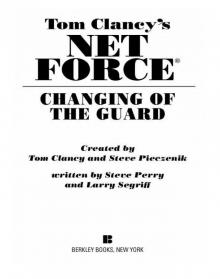 Changing of the Guard
Changing of the Guard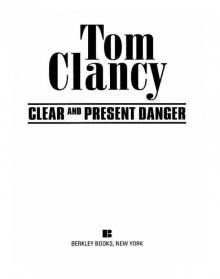 Clear and Present Danger
Clear and Present Danger Hounds of Rome
Hounds of Rome Breaking Point
Breaking Point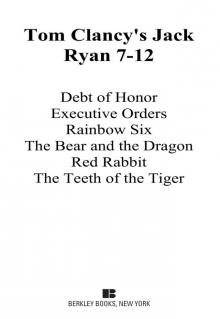 Tom Clancy's Jack Ryan Books 7-12
Tom Clancy's Jack Ryan Books 7-12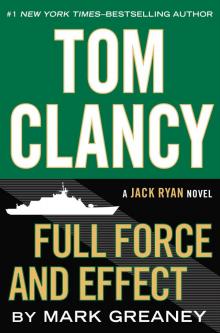 Full Force and Effect
Full Force and Effect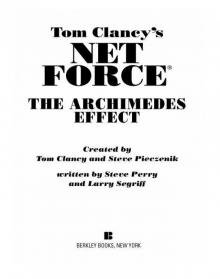 The Archimedes Effect
The Archimedes Effect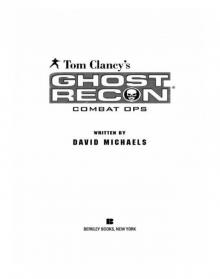 Combat Ops
Combat Ops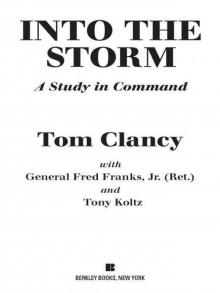 Into the Storm: On the Ground in Iraq
Into the Storm: On the Ground in Iraq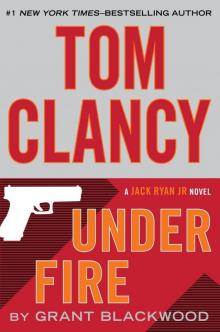 Under Fire
Under Fire Point of Impact
Point of Impact Red Rabbit
Red Rabbit Rainbow Six
Rainbow Six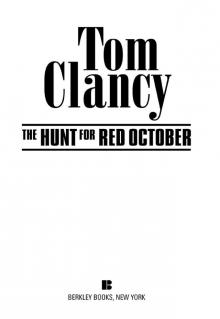 The Hunt for Red October
The Hunt for Red October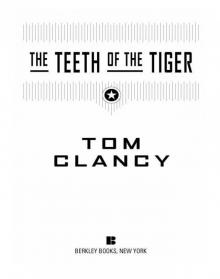 The Teeth of the Tiger
The Teeth of the Tiger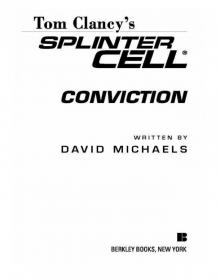 Conviction (2009)
Conviction (2009)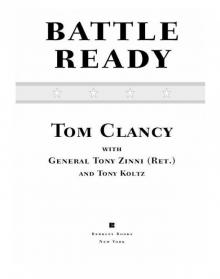 Battle Ready
Battle Ready Patriot Games
Patriot Games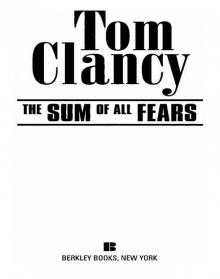 The Sum of All Fears
The Sum of All Fears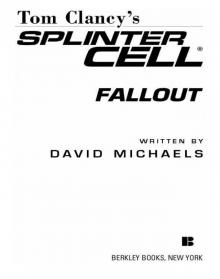 Fallout (2007)
Fallout (2007)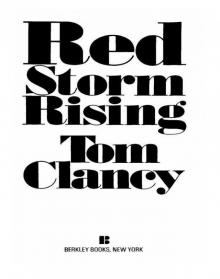 Red Storm Rising
Red Storm Rising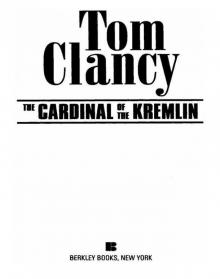 The Cardinal of the Kremlin
The Cardinal of the Kremlin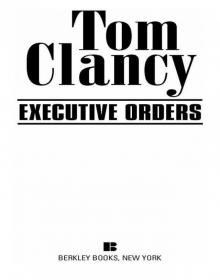 Executive Orders
Executive Orders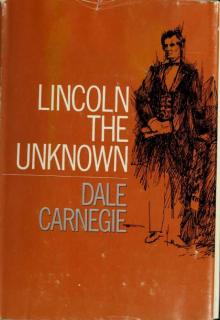 Lincoln, the unknown
Lincoln, the unknown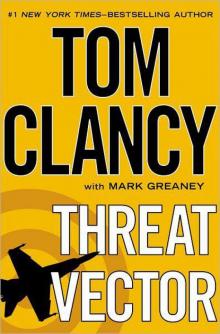 Threat Vector
Threat Vector The Hunted
The Hunted Shadow Warriors: Inside the Special Forces
Shadow Warriors: Inside the Special Forces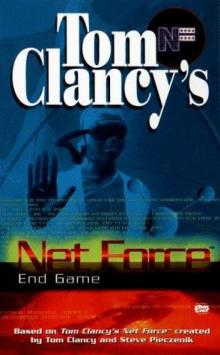 End Game
End Game Special Forces: A Guided Tour of U.S. Army Special Forces
Special Forces: A Guided Tour of U.S. Army Special Forces Locked On
Locked On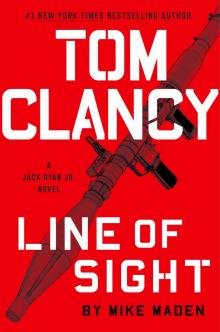 Line of Sight
Line of Sight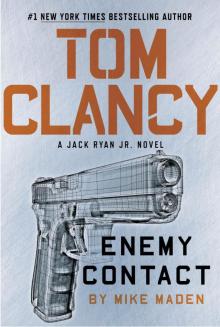 Tom Clancy Enemy Contact - Mike Maden
Tom Clancy Enemy Contact - Mike Maden Fighter Wing: A Guided Tour of an Air Force Combat Wing
Fighter Wing: A Guided Tour of an Air Force Combat Wing Springboard
Springboard Line of Sight - Mike Maden
Line of Sight - Mike Maden EndWar
EndWar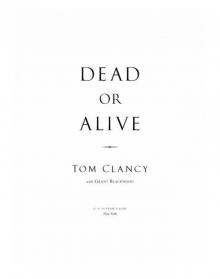 Dead or Alive
Dead or Alive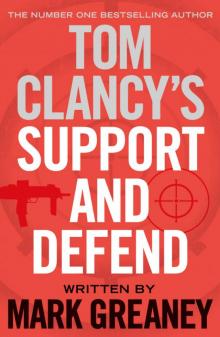 Tom Clancy Support and Defend
Tom Clancy Support and Defend Checkmate
Checkmate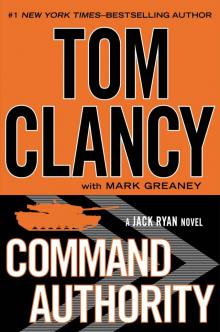 Command Authority
Command Authority Carrier: A Guided Tour of an Aircraft Carrier
Carrier: A Guided Tour of an Aircraft Carrier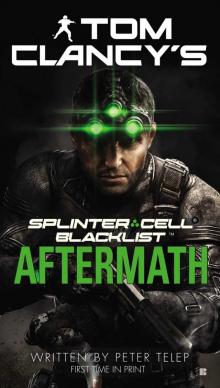 Blacklist Aftermath
Blacklist Aftermath Marine: A Guided Tour of a Marine Expeditionary Unit
Marine: A Guided Tour of a Marine Expeditionary Unit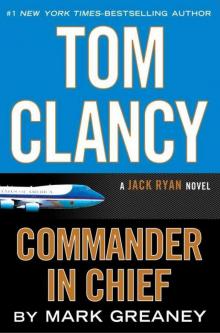 Commander-In-Chief
Commander-In-Chief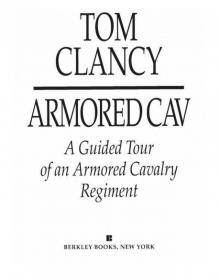 Armored Cav: A Guided Tour of an Armored Cavalry Regiment
Armored Cav: A Guided Tour of an Armored Cavalry Regiment Tom Clancy's Jack Ryan Books 1-6
Tom Clancy's Jack Ryan Books 1-6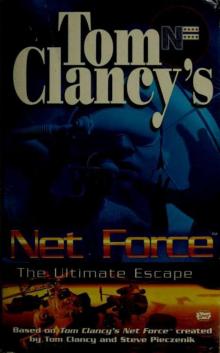 The Ultimate Escape
The Ultimate Escape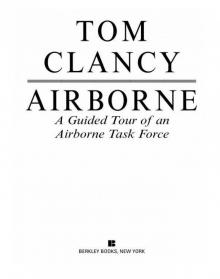 Airborne: A Guided Tour of an Airborne Task Force
Airborne: A Guided Tour of an Airborne Task Force Debt of Honor
Debt of Honor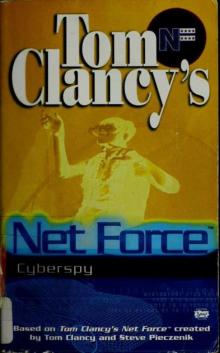 Cyberspy
Cyberspy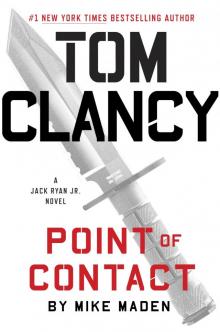 Point of Contact
Point of Contact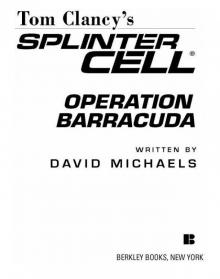 Operation Barracuda (2005)
Operation Barracuda (2005)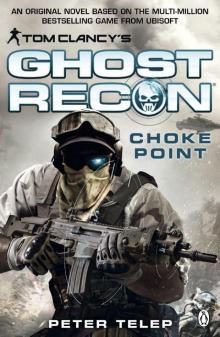 Choke Point
Choke Point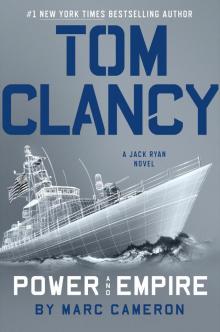 Power and Empire
Power and Empire Every Man a Tiger: The Gulf War Air Campaign
Every Man a Tiger: The Gulf War Air Campaign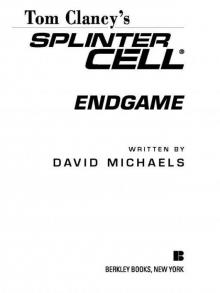 Endgame (1998)
Endgame (1998)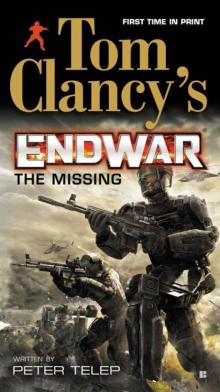 EndWar: The Missing
EndWar: The Missing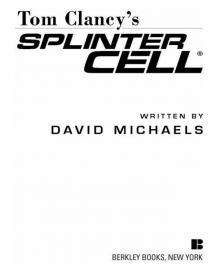 Splinter Cell (2004)
Splinter Cell (2004)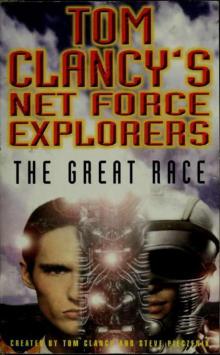 The Great Race
The Great Race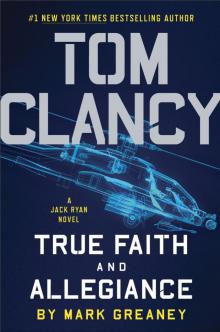 True Faith and Allegiance
True Faith and Allegiance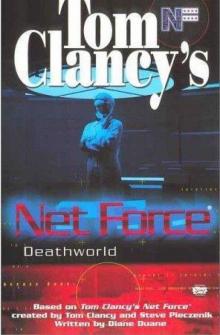 Deathworld
Deathworld Ghost Recon (2008)
Ghost Recon (2008)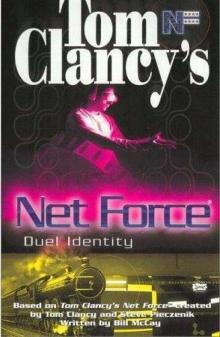 Duel Identity
Duel Identity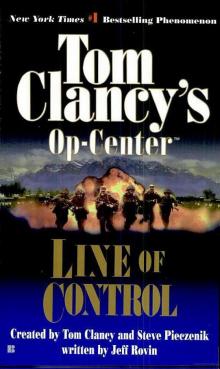 Line of Control o-8
Line of Control o-8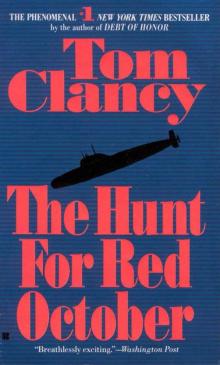 The Hunt for Red October jr-3
The Hunt for Red October jr-3 Hidden Agendas nf-2
Hidden Agendas nf-2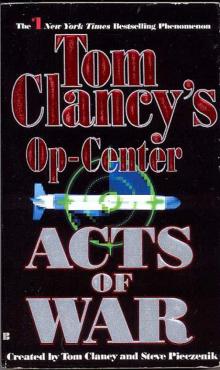 Acts of War oc-4
Acts of War oc-4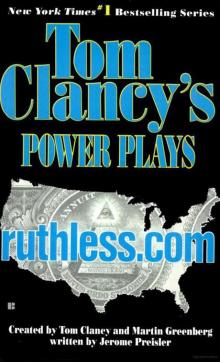 Ruthless.Com pp-2
Ruthless.Com pp-2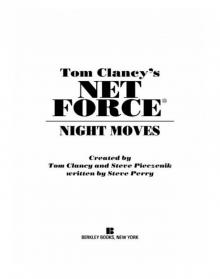 Night Moves
Night Moves The Hounds of Rome - Mystery of a Fugitive Priest
The Hounds of Rome - Mystery of a Fugitive Priest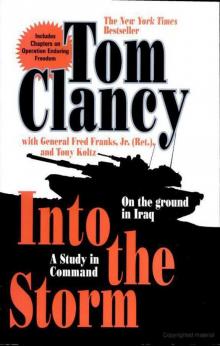 Into the Storm: On the Ground in Iraq sic-1
Into the Storm: On the Ground in Iraq sic-1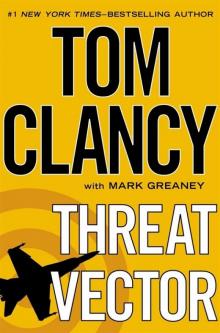 Threat Vector jrj-4
Threat Vector jrj-4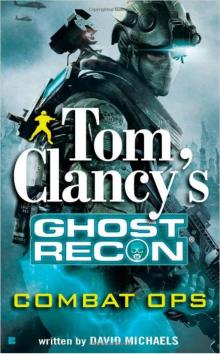 Combat Ops gr-2
Combat Ops gr-2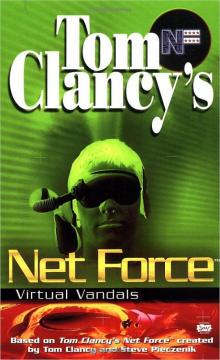 Virtual Vandals nfe-1
Virtual Vandals nfe-1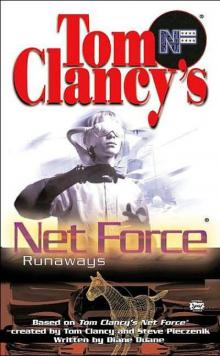 Runaways nfe-16
Runaways nfe-16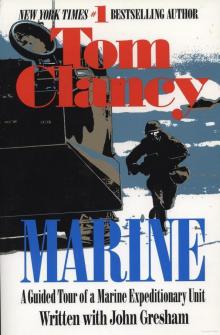 Marine: A Guided Tour of a Marine Expeditionary Unit tcml-4
Marine: A Guided Tour of a Marine Expeditionary Unit tcml-4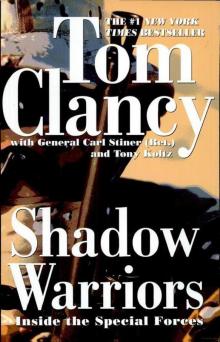 Shadow Warriors: Inside the Special Forces sic-3
Shadow Warriors: Inside the Special Forces sic-3 Jack Ryan Books 1-6
Jack Ryan Books 1-6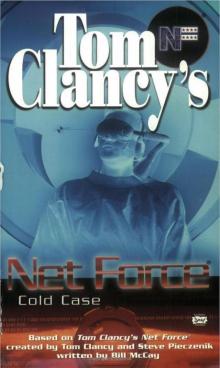 Cold Case nfe-15
Cold Case nfe-15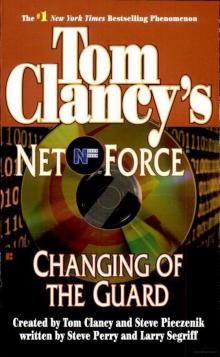 Changing of the Guard nf-8
Changing of the Guard nf-8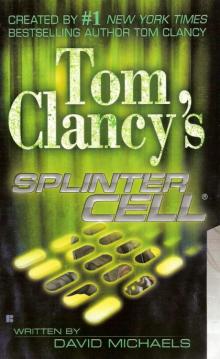 Splinter Cell sc-1
Splinter Cell sc-1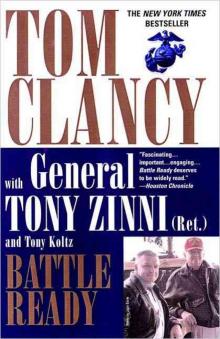 Battle Ready sic-4
Battle Ready sic-4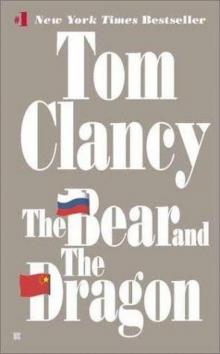 The Bear and the Dragon jrao-11
The Bear and the Dragon jrao-11 Fighter Wing: A Guided Tour of an Air Force Combat Wing tcml-3
Fighter Wing: A Guided Tour of an Air Force Combat Wing tcml-3 Patriot Games jr-1
Patriot Games jr-1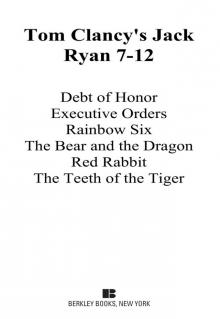 Jack Ryan Books 7-12
Jack Ryan Books 7-12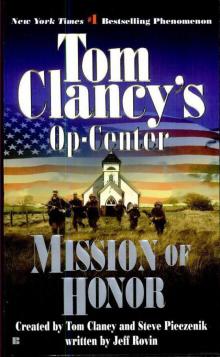 Mission of Honor o-9
Mission of Honor o-9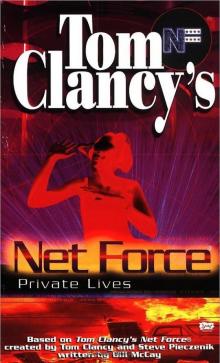 Private Lives nfe-9
Private Lives nfe-9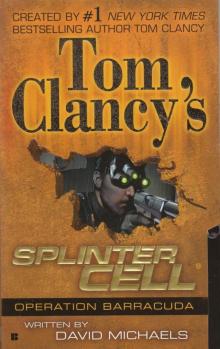 Operation Barracuda sc-2
Operation Barracuda sc-2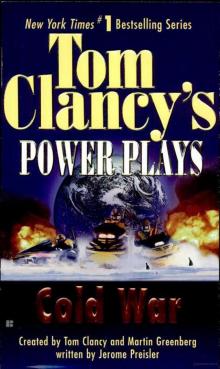 Cold War pp-5
Cold War pp-5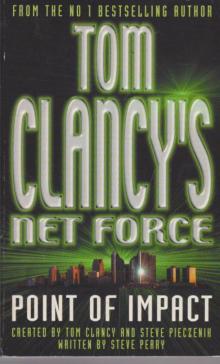 Point of Impact nf-5
Point of Impact nf-5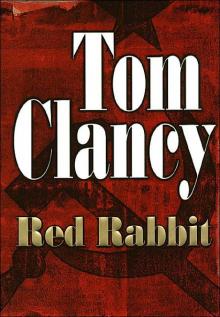 Red Rabbit jr-9
Red Rabbit jr-9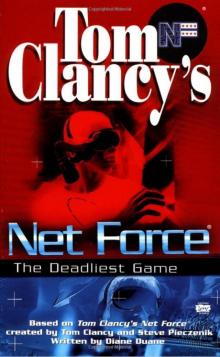 The Deadliest Game nfe-2
The Deadliest Game nfe-2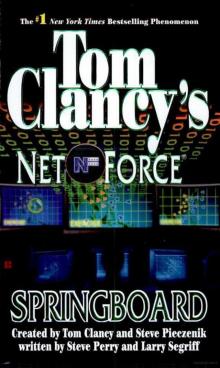 Springboard nf-9
Springboard nf-9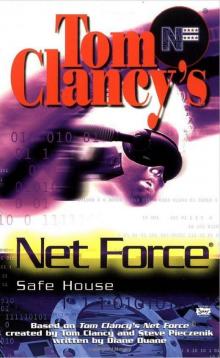 Safe House nfe-10
Safe House nfe-10 EndWar e-1
EndWar e-1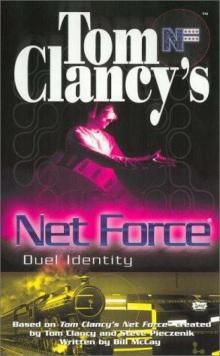 Duel Identity nfe-12
Duel Identity nfe-12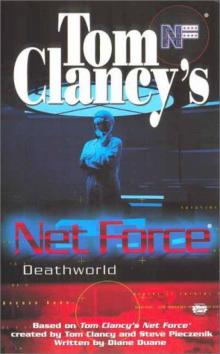 Deathworld nfe-13
Deathworld nfe-13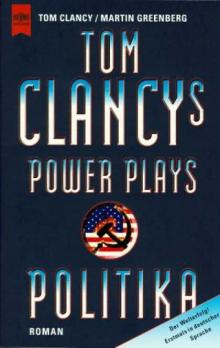 Politika pp-1
Politika pp-1 Rainbow Six jr-9
Rainbow Six jr-9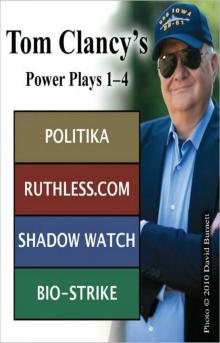 Tom Clancy's Power Plays 1 - 4
Tom Clancy's Power Plays 1 - 4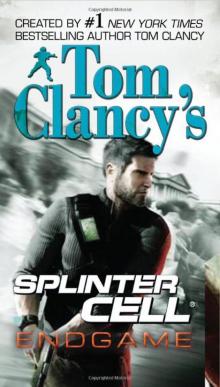 Endgame sc-6
Endgame sc-6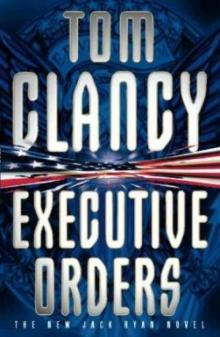 Executive Orders jr-7
Executive Orders jr-7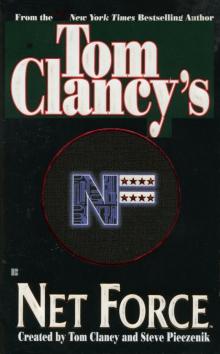 Net Force nf-1
Net Force nf-1 Call to Treason o-11
Call to Treason o-11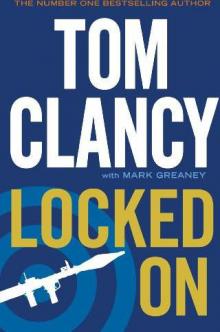 Locked On jrj-3
Locked On jrj-3 Against All Enemies
Against All Enemies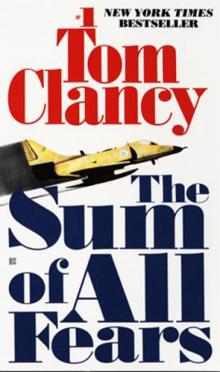 The Sum of All Fears jr-7
The Sum of All Fears jr-7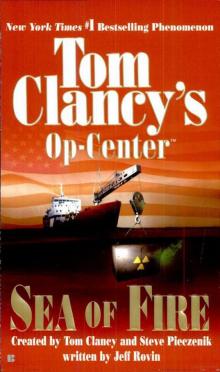 Sea of Fire o-10
Sea of Fire o-10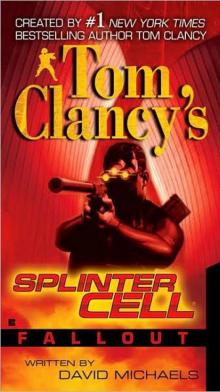 Fallout sc-4
Fallout sc-4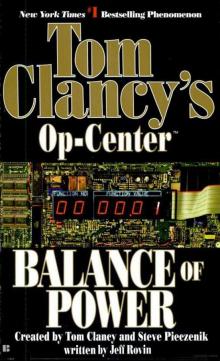 Balance of Power o-5
Balance of Power o-5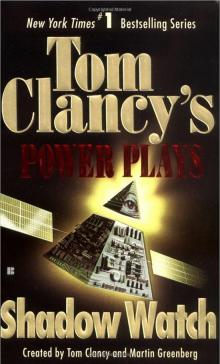 Shadow Watch pp-3
Shadow Watch pp-3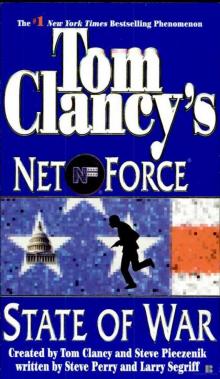 State of War nf-7
State of War nf-7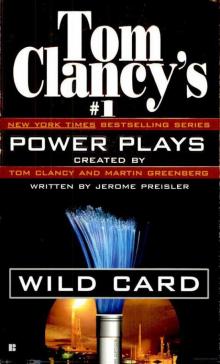 Wild Card pp-8
Wild Card pp-8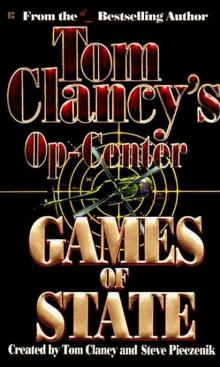 Games of State o-3
Games of State o-3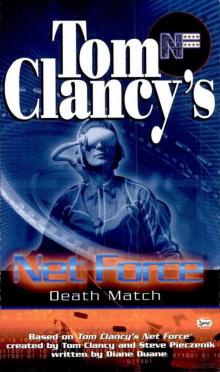 Death Match nfe-18
Death Match nfe-18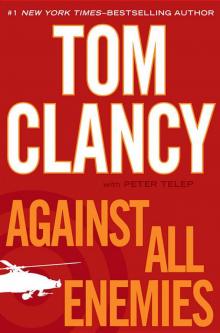 Against All Enemies mm-1
Against All Enemies mm-1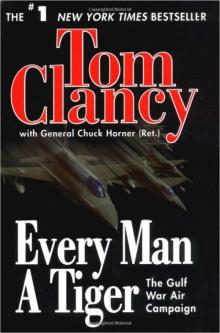 Every Man a Tiger: The Gulf War Air Campaign sic-2
Every Man a Tiger: The Gulf War Air Campaign sic-2 Cybernation nf-6
Cybernation nf-6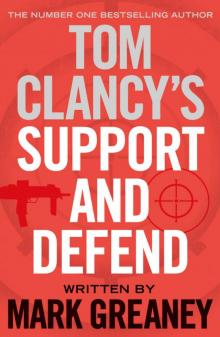 Support and Defend
Support and Defend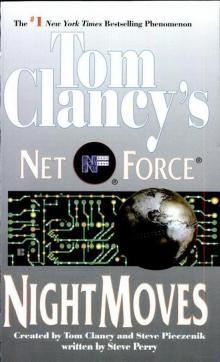 Night Moves nf-3
Night Moves nf-3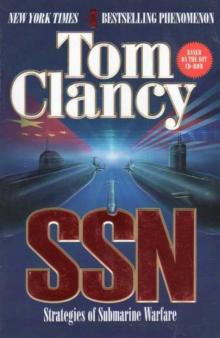 SSN
SSN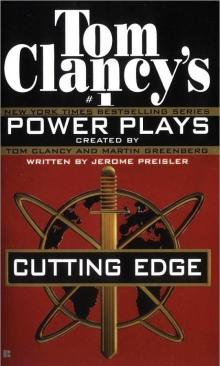 Cutting Edge pp-6
Cutting Edge pp-6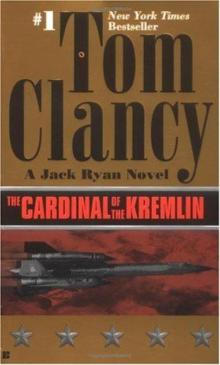 The Cardinal of the Kremlin jrao-5
The Cardinal of the Kremlin jrao-5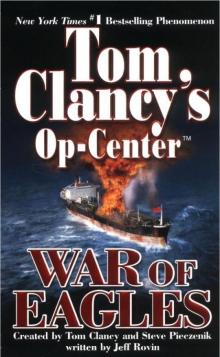 War of Eagles o-12
War of Eagles o-12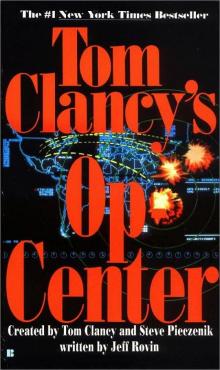 Op-Center o-1
Op-Center o-1 Mirror Image o-2
Mirror Image o-2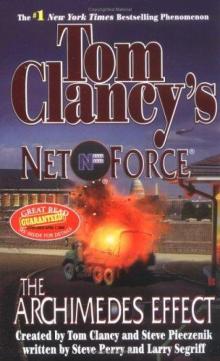 The Archimedes Effect nf-10
The Archimedes Effect nf-10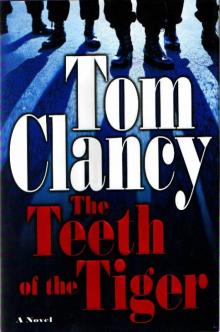 Teeth of the Tiger jrj-1
Teeth of the Tiger jrj-1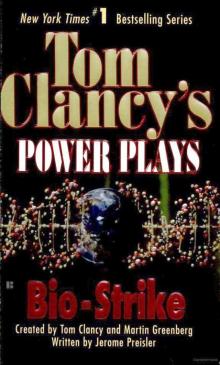 Bio-Strike pp-4
Bio-Strike pp-4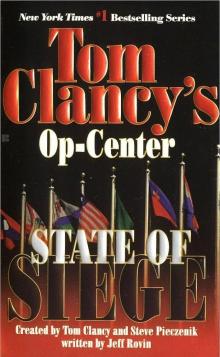 State of Siege o-6
State of Siege o-6 Debt of Honor jr-6
Debt of Honor jr-6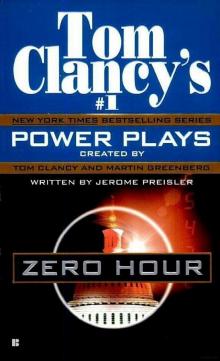 Zero Hour pp-7
Zero Hour pp-7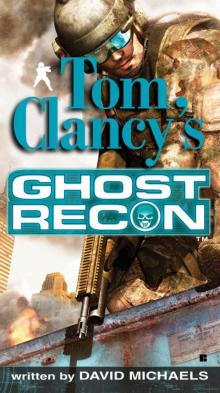 Ghost Recon gr-1
Ghost Recon gr-1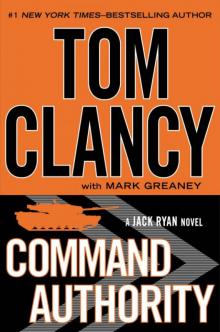 Command Authority jr-10
Command Authority jr-10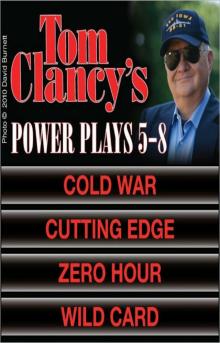 Tom Clancy's Power Plays 5 - 8
Tom Clancy's Power Plays 5 - 8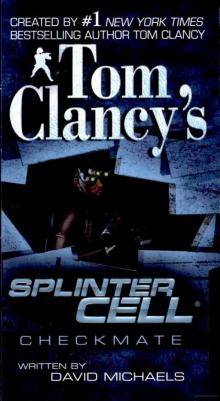 Checkmate sc-3
Checkmate sc-3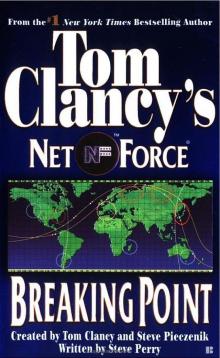 Breaking Point nf-4
Breaking Point nf-4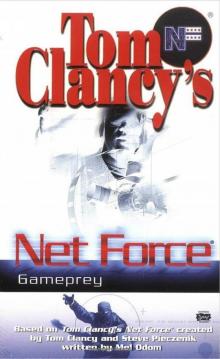 Gameprey nfe-11
Gameprey nfe-11 The Hunted e-2
The Hunted e-2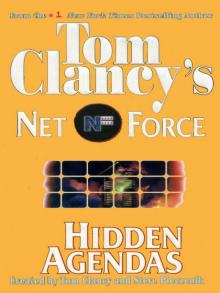 Hidden Agendas
Hidden Agendas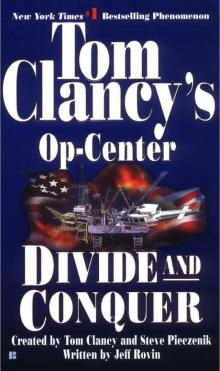 Divide and Conquer o-7
Divide and Conquer o-7